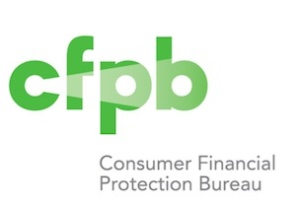QWR: The RESPA Letter
Most reading this post are reading it for a particular reason which is to learn about writing a letter to a mortgage lender and/or servicer regarding a specific problem or situation such as requesting the mortgage servicer report your payments to the credit bureau(s). For some, it may be that your mortgage servicer or bank is reporting incorrect information or you may need specific documentation. For others, perhaps this is being read for informational purposes. In any event, we trust the reader finds this information helpful.
Step 1. Contact your mortgage servicer for the correct address for legal correspondence. You must use the legal (registered) address of the servicer. Some servicers actually have a specific address for a Qualified Written Request (QWR). This is a different address than where you mail the payment or from where you get the periodic statements or notices. This procedure was established per the Real Estate Settlement Procedures Act (RESPA).
Step 2. You may utilize the following template provided by HUD for your QWR. Or you may click here to open and read the information or you may copy and paste the pertinent paragraphs (opening and closing) as show below. Focus your thoughts and keep your letter brief and specific to the topic. 
“Attention Customer Service:
Subject: [Your loan number]
[Names on loan documents]
[Property and/or mailing address]
This is a “qualified written request” under Section 6 of the Real Estate Settlement Procedures Act (RESPA).
I am writing because:
- Describe the issue or the question you have and/or what action you believe the lender should take.
- Attach copies of any related written materials (as applicable).
- Describe any conversations with customer service regarding the issue and to whom you spoke.
- Describe any previous steps you have taken or attempts to resolve the issue.
- List a daytime telephone number in case a customer service representative from the legal department wishes to contact you.
Sincerely, [Your name – Printed and Signed]
I understand that under Section 6 if RESPA you are required to acknowledge my request within 20 business days and must try and resolve the issue within 30 business days.”
If you are satisfied with the resolution to your situation, you may wish to compliment the servicer by sending a note to the Consumer Financial Protection Bureau (CFPB or Bureau) via their Comment Form.
- If, on the other hand, you have not received a reply at the end of the allotted 20 business days – Twenty business days is about a month; for your convenience click here for a business day calculator – we suggest repeat the above process and if still no response, we suggest you contact a HUD Certified Housing Counselor (click here for a list of counselors in your area) at little or no cost to you; or an attorney familiar with the QRM/Section 6 RESPA dispute process as discussed in the 2006 Federal Trade Commission Board of Governors of the Federal Reserve System Report to Congress on the Fair Credit Reporting Act Dispute Process.
Step 3. Send your QWR via Certified Mail Return Receipt. Keep copies of your letter and any enclosures as well as your Certified Mail Receipt from the post office and the Return Receipt from your mortgage servicer proving they have received your QRM
Finally, if you are still unable to resolve the situation, there is a complaint process that may get action. We suggest this be your last and not first step as you will then have evidence which will indicate to the Bureau that the servicer is either unwilling or unable to address your situation. Mortgage Complaint Form
The following is excerpted from the prepared remarks of Steven Antonakes, Deputy Director of the CFPB which he presented to the Mortgage Bankers Association National Mortgage Servicing Conference in Orlando, Florida on February 19, 2014.
“…My message to you today is a tough one. I don’t expect a standing ovation when I leave. But I do want you to understand our perspective. I would be remiss if I did not share it with you … if you choose to operate in this space (mortgage servicing), the fundamental rules have changed forever. It’s not just about collecting payments. It’s about recognizing that you must treat Americans who are struggling to pay their mortgages fairly before exercising your right to foreclose. We have raised the bar in favor of American consumers and we are ready, willing and able to vigorously enforce that bar.
Ultimately, these profound changes will be good for all Americans, including industry. But please understand, business as usual has ended in mortgage servicing. Groundhog Day is over. Thank you.”
Sheriff – Update
In a June 22, 2016, Press Release, the CFPB said, in part: “In 2013, the CFPB established mortgage servicing rules designed to protect consumers against many of the practices that plagued the mortgage servicing industry during and after the housing crisis.
According to the CFPB, the rules require servicers to maintain accurate records, give troubled borrowers direct and ongoing access to servicing personnel, promptly credit payments, and correct errors on request.”
In addition to sending your RESPA letter, do not hesitate to file a complaint, with the CFPB. Click here for the particular complaint link.
The Bureau’s Enforcement Power – One Example
As an example of the Bureau’s enforcement authority, RealtySouth™, a Berkshire Hathaway Affiliate, was recently fined $500,000.00 for a RESPA violation which amounted to failure to disclose their affiliated business relationship(s) to consumers. This is a typical example of the enforcement action undertaken by the Bureau as one may readily determine with an Internet search. For those who don’t recognize the name Berkshire Hathaway, it is largely owned by one of the world’s wealthiest persons. Clearly, wealth does not buy immunity from the CFPB.
Exceptions to QWR: Those transactions excluded from the QWR are limited to “(1) subordinate lien loans or (2) open-end lines of credit subject to TILA, whether secured by a first or subordinate lien.”* Further, “(a) request does not constitute a QWR if it is delivered to a servicer more than one year after either the date of transfer of servicing or the date that the mortgage servicing loan was paid in full, as applicable.”*
NOTICE: I am not an attorney nor am I providing legal advise. This post is for educational purposes only. The images are for illustration only and not meant to imply in any way an endorsement or authorization by any government agency or authority of this blog or this post.
* Jonathan Foxx, President & Managing Director Lenders Compliance Group
Image Attribution: erickimphotography.com and CFPB
Financially Speaking™ James Spray, RMLO, CNE, FICO Pro | CO LMO 100008715 / NMLS 257365 | Rev. June 16, 2016












